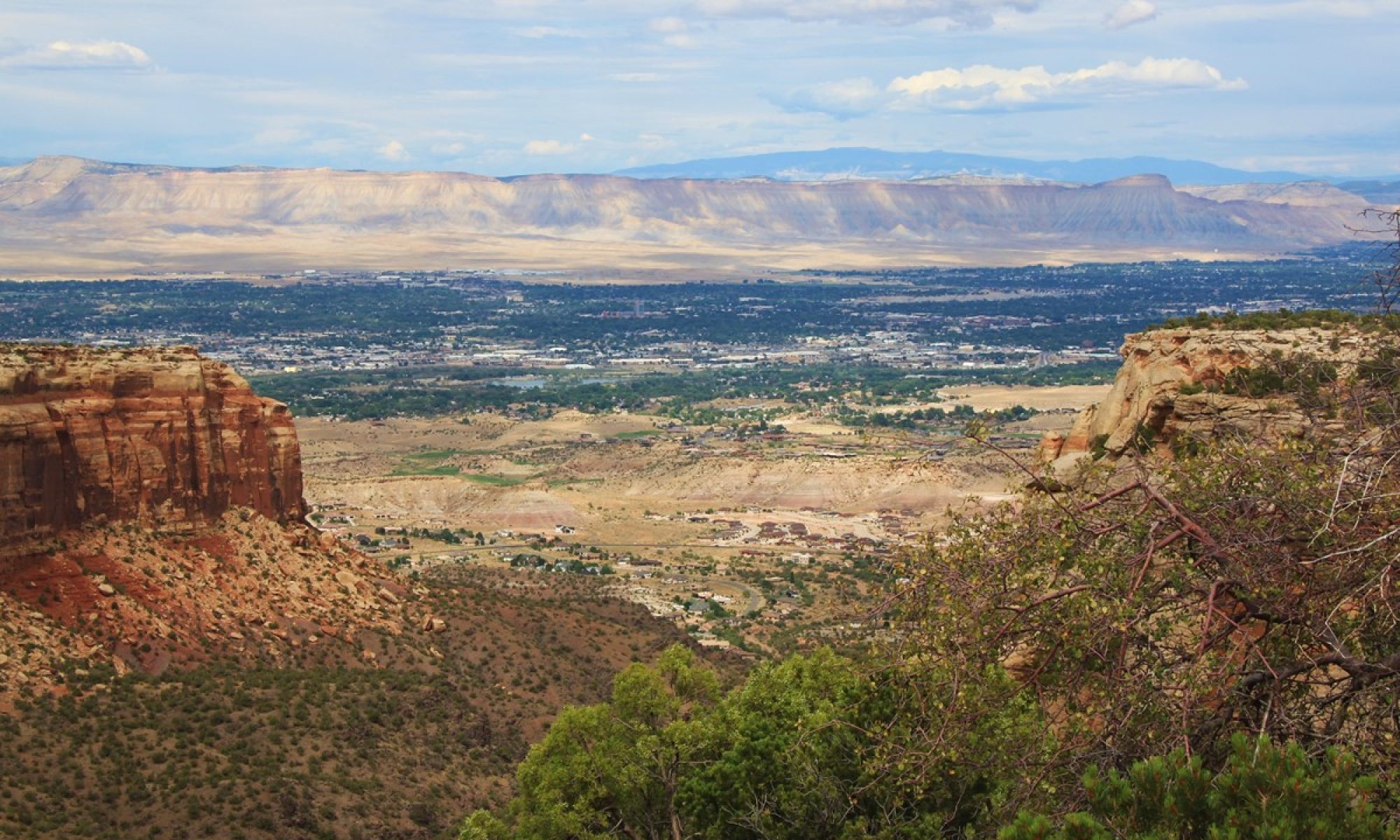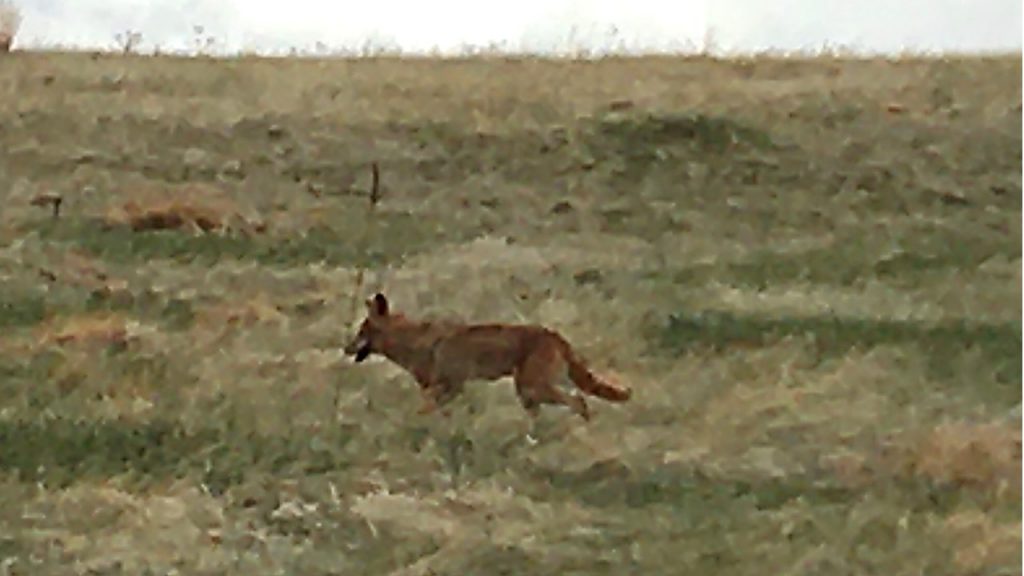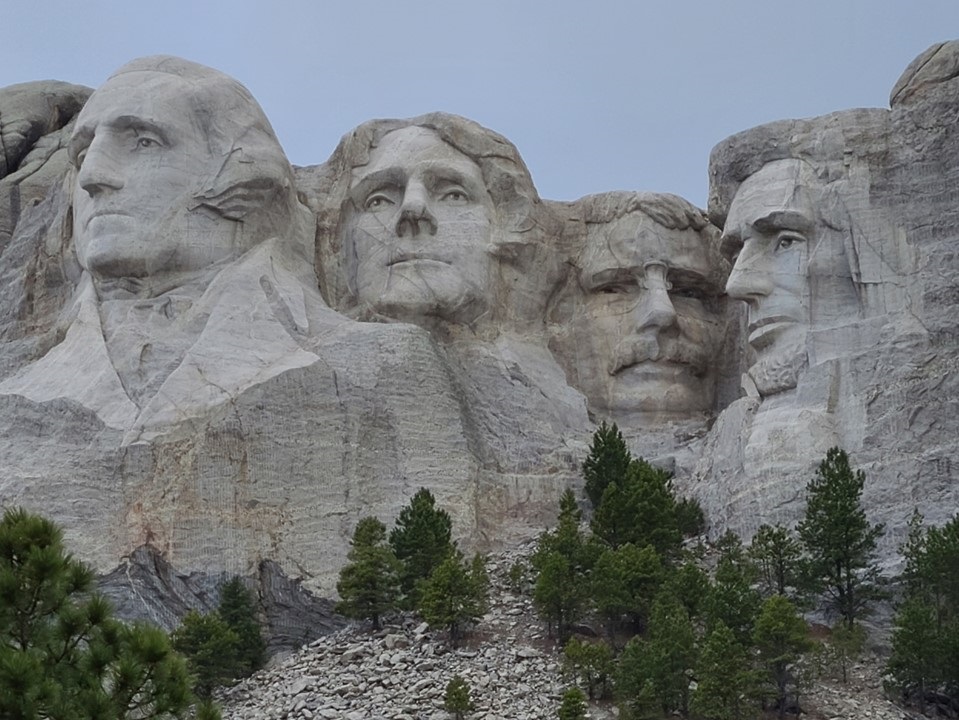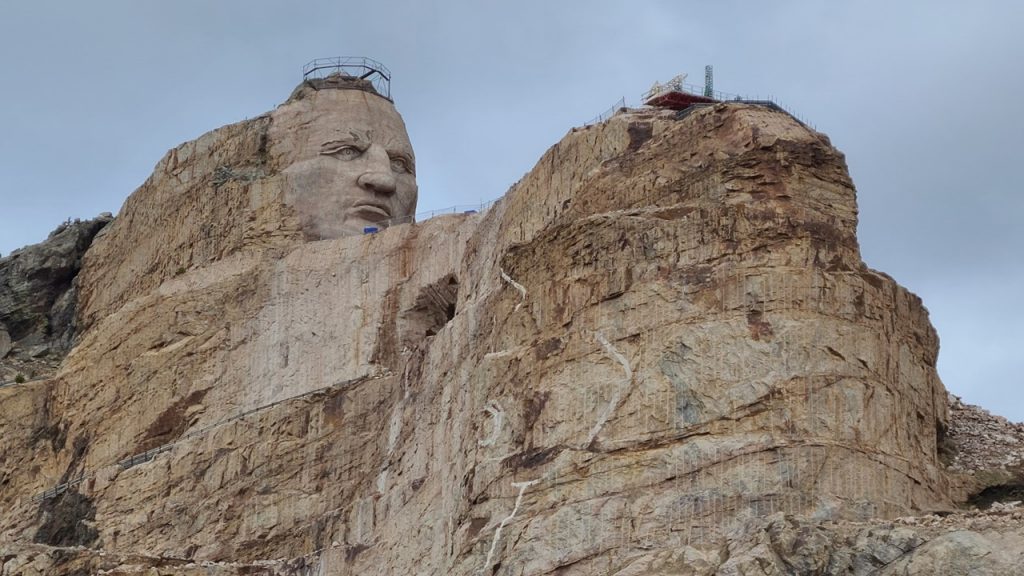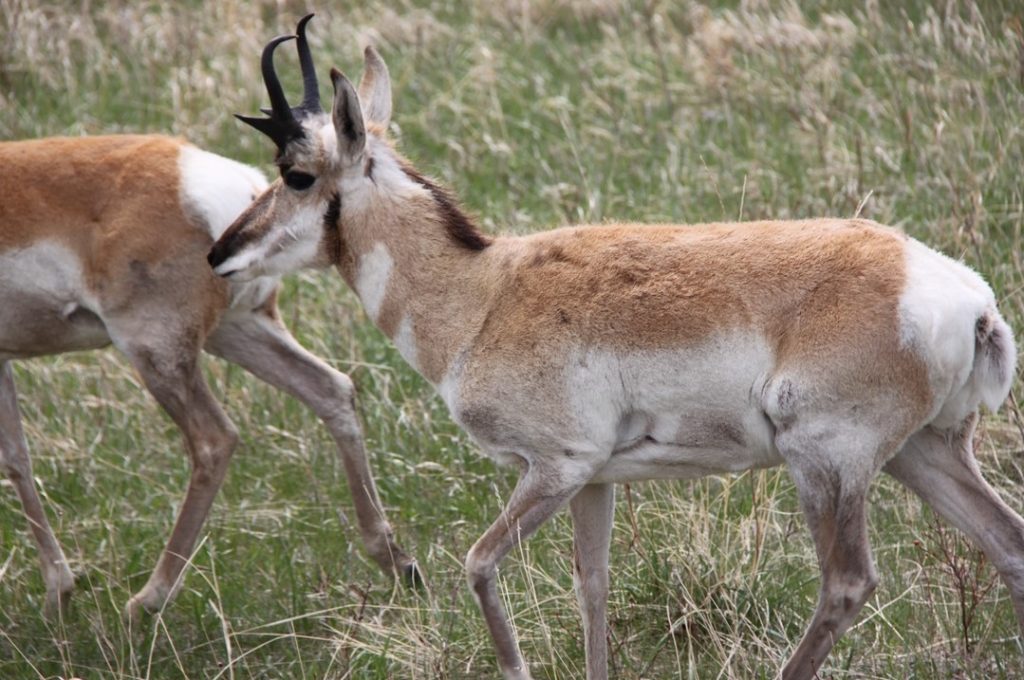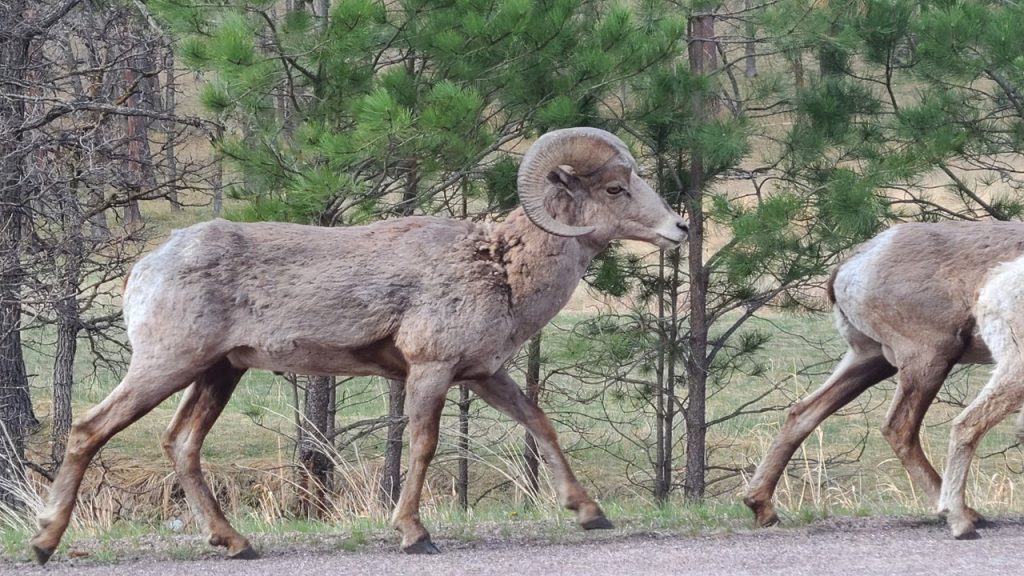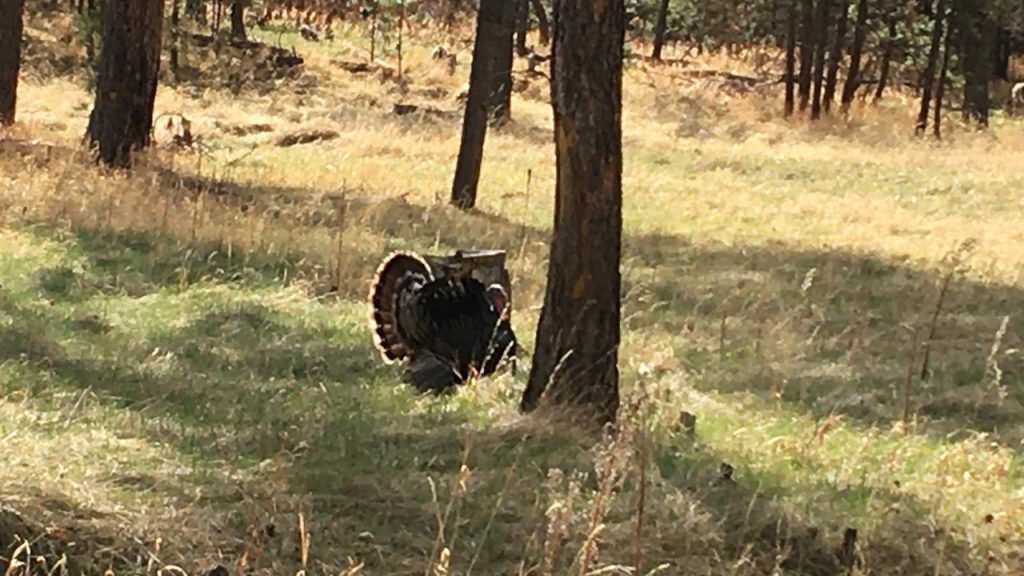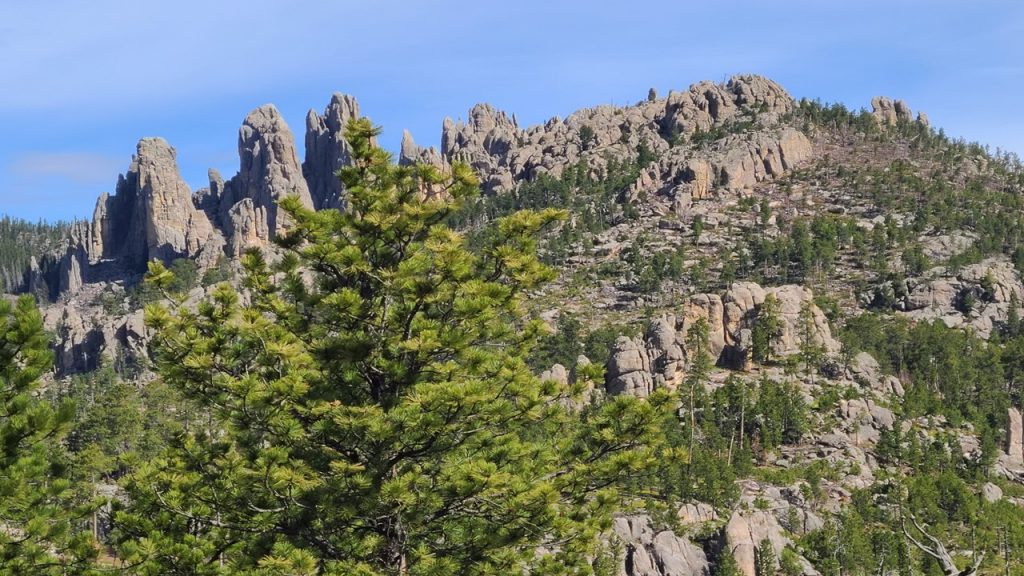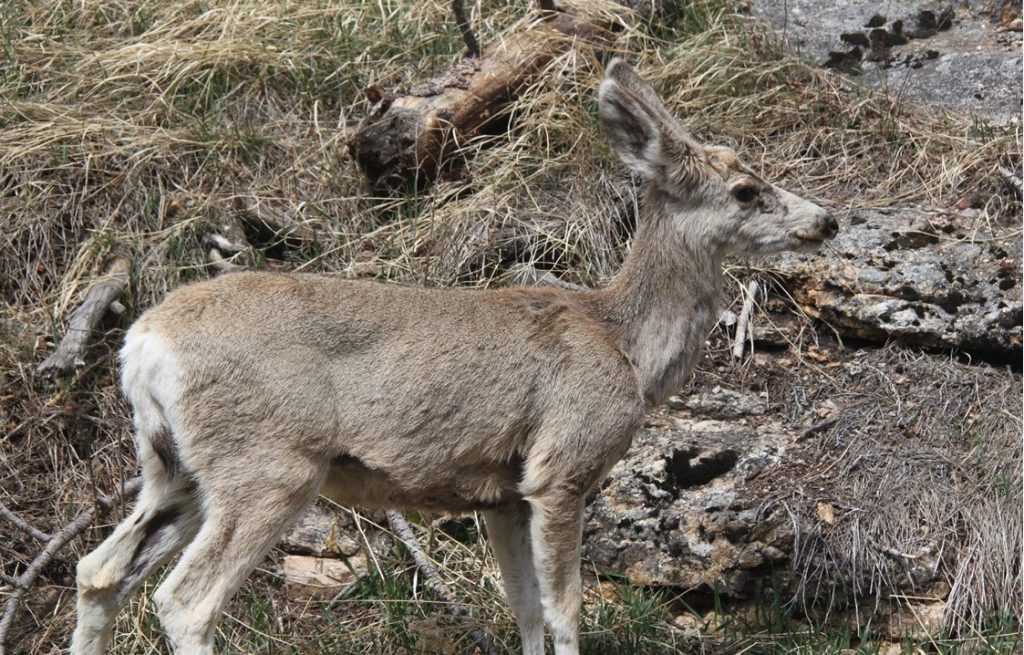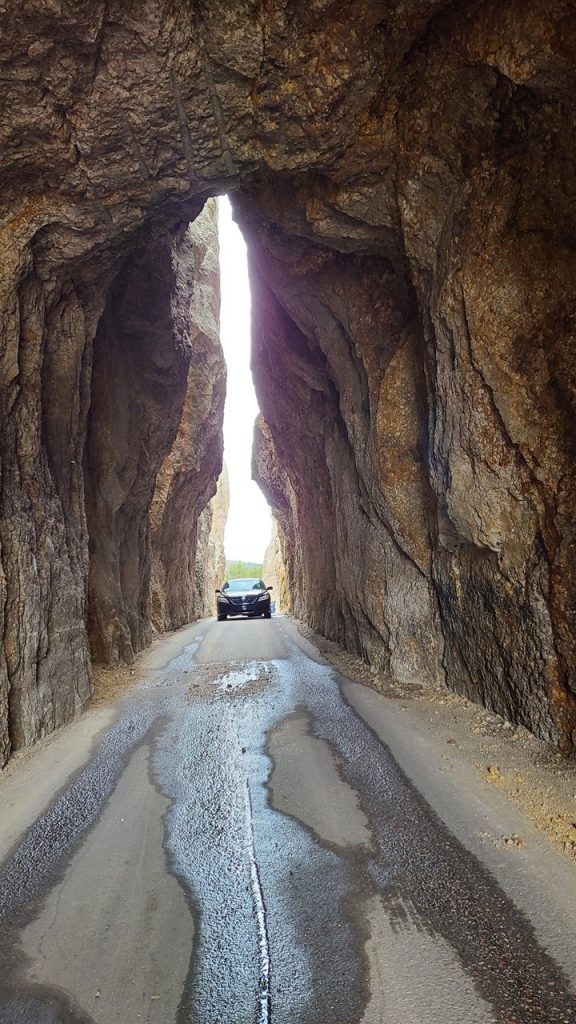The Black Hills represent an uplift and exposure of older, harder sediments to the surface. These exposed granites form the basis for the carvings of Mount Rushmore and The Crazy Horse Monument. The geographic high caused water runoff to the east to seriously erode the softer, uplifted prairie sediments giving rise to the erosive canyons of the Badlands. A geologic map clearly shows the natural consequence of this uplift. The “Black Hills” get their name from the native Lakota Tribe who referred to the area by its dark appearance due to the tree-covered mountains at a distance.
Early Monday morning, we left the hotel and headed back to Mount Rushmore for a day viewing, only to be met by 31-degree weather and freezing sleet! At Mount Rushmore, we hiked in a cold rain to the base of the rubble pile, referred to as “The President’s Trail.” From there, we could see each President’s carved face up-close. We then shopped at the Visitor’s Center and reviewed the museum of the memorial’s construction, as the Governor prepared for a Press Conference outside to announce the “Opening of the State” in time for Tourist Season which would begin on Memorial Day! Mount Rushmore was a huge project that began in 1927 and was supposed to take 5-years and $500,000 to complete. It was proposed by the South Dakota State Historian to include Native Americans and American Frontiersmen, but when it was funded and directed by the Federal Government and they assigned famous sculptor, Gutzon Borglum, to the Project, it was changed to include only the faces of four U.S. Presidents. Controversy and delays plagued the Project which ended up taking 14 years and over $1 million dollar to complete. 400 workers climbed 700 stairs every day to punch in on a time clock before being lowered by cables over the 500-foot face of the mountain to begin work using crude chisels and dynamite. The area below the faces included a camp and power generation for everything that they would need. As defects in the rock were discovered, Borglum would move the faces around and reposition them on a huge scale model that would be updated and used for measurements to guide the carving. Technically, the land belongs to the Native American Indigenous Tribes, however no movement to return it has yet taken place.
After visiting Mount Rushmore, we drove to the nearby Crazy Horse Memorial where we toured the Indian Museum of North America and its huge collection of art and artifacts from more than 300 Native American tribes and took a bus trip to the base of the carving. The memorial, which occupies a 600-foot-tall mountain, commemorates the Lakota leader Crazy Horse, and is dedicated to preserving and sharing the living history and culture of all Native Americans. This incredible memorial, which is still under construction, is 2nd and 3rd Generation family-owned and privately funded and will likely take 100+ years to reach completion. The family of the original sculptor wants to preserve the original intent of the memorial and does not trust allowing it to fall under Government funding or control.
After visiting the Crazy Horse Memorial, we made a short trip to Wind Cave National Park. Wind Cave National Park is about 10 miles north of the town of Hot Springs and was made a National Park in 1903 by President Teddy Roosevelt. Wind Cave was the U.S.’s 7th National Park and the first cave in the world to be designated a National Park The dry cave was discovered by the Bingham Brothers in 1881 when they heard wind rushing out from a small hole in the ground. The cave was then opened to visitors in 1892 and tourists explored by candlelight. After we descended ~200ft down roughhewn steps, we observed calcite formations known as “boxwork”, which are extremely rare, as well as “moon’s milk” and “popcorn” formations. We explored a small part of the extensive cave network before we rode an elevator back to the surface.
After returning to the hotel, we took some time to relax in the hot tub before showering and have dinner again at the Buglin’s Bull.
On Tuesday, we drove to Custer State Park, and, as had been the occurrence on most of this trip, there was no one at the open park entrance. We drove along the Wilderness Loop until we came upon a small group of wild burros that had descended from abandoned miners’ stock from over 100 years ago. They were clearly looking for a handout, but we rolled-up our windows and moved slowly along. Along the journey, we saw baby bison and a herd of pronghorns before we arrived at the Visitor’s Center to register for a Day Pass and collect a few maps. After stopping for passing groups of Bighorn Sheep, we finally turned onto the 37-mile-long Needles Highway where we came upon several wild Turkeys with a large male spreading his tail feathers for show. The road grew narrower and twisty and became limited to automobiles and small trucks only.
Eventually, we came upon the Mountain Pinnacles and Iron Rock Tunnel – the first tunnel as one heads northwest through the Pinnacles. This road was cut and was considered as a possible site for the Mount Rushmore sculpture, but after inspection was deemed too unstable. These tunnels are only fit for 1 vehicle passing through at a time, and the walls miss our car by less than 1-foot! Next, we reach the famous Needles Eye Tunnel – a narrow crack that has been tunneled at the base that barely fits our Dodge Charger through, and only after we are sure no traffic is approaching from the other direction. After passing through the “eye of the Needle” we come upon Sylvan Lake and stop for a bite of lunch before embarking on a hike around the lake, where snow and ice are still present in the shadows of the granite pillars. We then take the Needles highway back into the center of Custer Park where we explored scenic valleys, seldom traveled dirt roads, and charred hills from recent forest fires. At the edge of the park, we came upon a huge herd of bison (over 1000 head) coming slowly down from the high country heading for the rich valleys of the park, many with young calves in-tow.
After watching the Bison, we exit Custer Park and head toward the town of Hot Springs – an old 1800’s town with a multitude of natural hot springs, a national cemetery, and the state’s largest Veterans Hospital. A local BBQ stand won over our temptation, and we stopped for a small beef brisket snack and conversation with the owner, before getting back on the road for the trip back to our hotel in Custer.
